Many of us want to do our part in today’s eco-conscious world. Businesses and consumers alike are increasingly aware of their environmental impact. However, some of the terminology associated with sustainable packaging can be confusing.
If you’ve ever felt you need help decoding the various acronyms and labels associated with sustainable packaging, this blog is for you. Below, we’ll break down some standard terms, including RC, PIR, PCR, and curbside recyclable, and explore their meaning and why they matter.
Recycled content (RC)
Recycled content, or RC, refers to the overall percentage of materials that have been recovered and reused in a product, including both post-industrial, pre-consumer, and post-consumer materials. Using recycled content helps reduce the demand for virgin materials and minimizes waste sent to landfills. When choosing packaging materials, opting for a higher percentage of recycled content helps to lower your environmental footprint.
Post-consumer recycled (PCR)
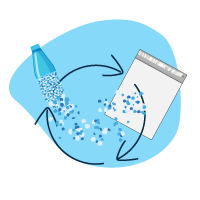 Post-consumer recycled materials come from products used and recycled by consumers. Items like plastic bottles, paper products, and glass containers are collected, processed, and turned into new materials. PCR gives new life to products that would otherwise end up in landfills or incinerators. Rigid paper mailers like our Mailjacket are made of 100% recycled content —70% of which is post-consumer recycled.
Post-consumer recycled materials come from products used and recycled by consumers. Items like plastic bottles, paper products, and glass containers are collected, processed, and turned into new materials. PCR gives new life to products that would otherwise end up in landfills or incinerators. Rigid paper mailers like our Mailjacket are made of 100% recycled content —70% of which is post-consumer recycled.
Post-industrial resin (PIR)
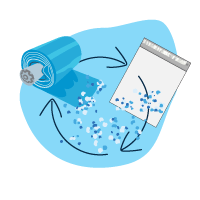 A term you might find occasionally is “post-industrial resin” or PIR. This refers to packaging material made from the scrap or waste created during the original manufacturing process. It may come from poly scrap or reprocessed pellets and can be recycled into new products. Because PIR materials are diverted from the waste stream and reintroduced into the production cycle, it kills two birds with one stone.
A term you might find occasionally is “post-industrial resin” or PIR. This refers to packaging material made from the scrap or waste created during the original manufacturing process. It may come from poly scrap or reprocessed pellets and can be recycled into new products. Because PIR materials are diverted from the waste stream and reintroduced into the production cycle, it kills two birds with one stone.
- PIR reduces the need for virgin materials
- PIR helps conserve resources and energy while reducing pollution associated with extracting and processing raw materials.
Curbside recyclable packaging
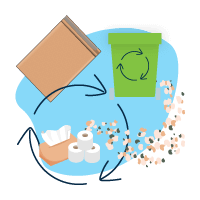 Curbside recyclable packaging can be placed in residential recycling bins and collected by municipal recycling programs. These materials are typically accepted in those weekly pickups, making it super convenient — a curbside recyclable mailer is probably the most accessible packaging for the average consumer to recycle at home.
Curbside recyclable packaging can be placed in residential recycling bins and collected by municipal recycling programs. These materials are typically accepted in those weekly pickups, making it super convenient — a curbside recyclable mailer is probably the most accessible packaging for the average consumer to recycle at home.
Choosing curbside recyclable packaging, such as our Ecojacket mailer, eliminates the need for wasteful corrugated boxes, air-filled pillows, or packaging peanuts.
In-store drop-off recyclable
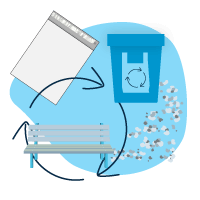
Flexible poly mailers and wraps that are accepted at your local grocery store’s designated front-of-store recycling bin to be properly recycled.
These types of plastics are then recycled into items such as park benches & decking.
Certified vs. uncertified materials
Certified materials meet specific environmental or sustainability standards set by third-party organizations. Certifications can validate claims regarding recycled content, biodegradability, compostability, and responsible sourcing.
Uncertified materials lack third-party verification of their environmental claims. While they may still be environmentally friendly, the absence of certification makes it challenging to assess their sustainability credentials.
Why do recycling terms matter?
Understanding these terms and labels empowers you to make informed decisions about your packaging choices. It’s no secret: sustainable mailers benefit the planet and resonate with environmentally conscious consumers. Making the best packaging choices can enhance brand reputation and loyalty.
By opting for materials with recycled content and choosing easy-to-recycle mailer options for customers, companies can reduce their environmental impact and contribute to a more sustainable future. We invite you to learn more about how PAC combines sustainability and customer satisfaction into our packaging solutions.

